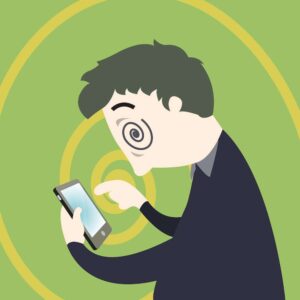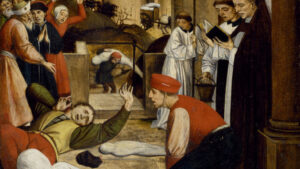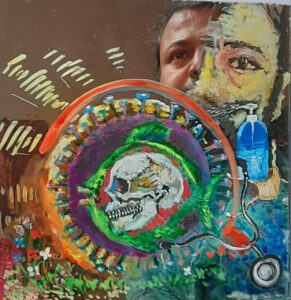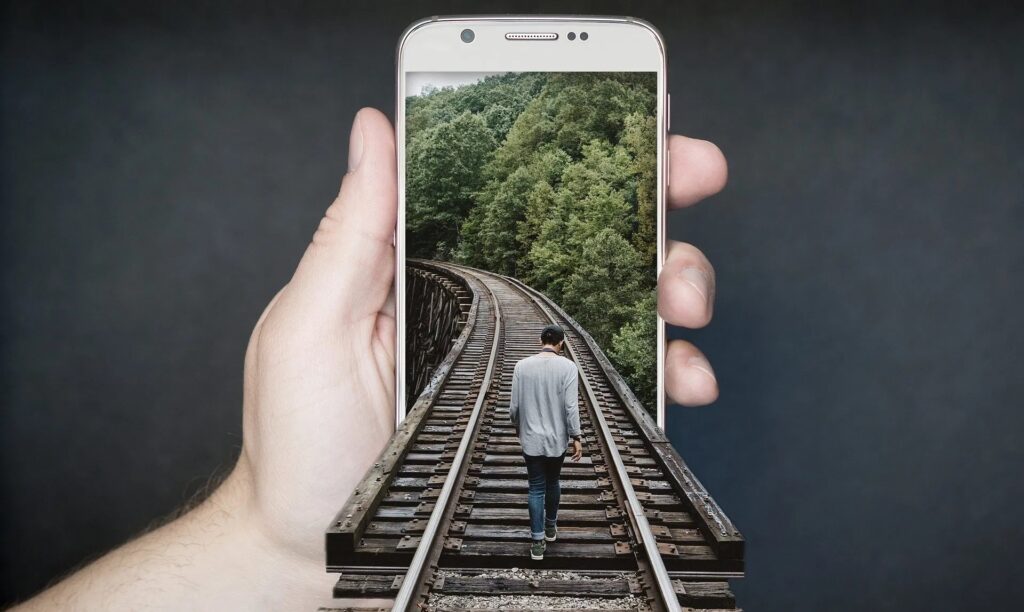–by Elena Morizio
–Reading Time – 20 min Approx
If art is the mirror of the society in which we live, how has modern man, together with his innate creativity, mirrored himself in a world twisted by a pandemic?
 Loyalty to my worldwide mirror art therapy project called Reflections for Change has given me the opportunity not only to observe hundreds of Coronavirus mirror drawings made by artists from every corner of the planet, but also to get in touch, listen and receive a truthful, perceptive, realistic picture of the current situation in their country directly from them.
Loyalty to my worldwide mirror art therapy project called Reflections for Change has given me the opportunity not only to observe hundreds of Coronavirus mirror drawings made by artists from every corner of the planet, but also to get in touch, listen and receive a truthful, perceptive, realistic picture of the current situation in their country directly from them.
But before answering the question I posed to you and to myself at the beginning, I would like to look at the past that always tells us and guides us in defining ourselves in our today and in our tomorrow.
Over the millennia, the human being has expressed himself and his vision of the world in many forms, cultures and creeds. But he, beyond his cultural belonging and his geographical location, originates from a single universal intuition and consciousness to which he has given the most disparate names and from which he has at times felt totally detached, denying it.
I report and share an example with you here:
I am reminded of the Enlightenment, or Age of Reason: a cultural, social, political and philosophical movement that in the eighteenth century, starting from Europe, influenced the human soul up to the Americas. Its transformative process led man to leave behind him ignorance and any religious dogma, superstition or determined and pre-established principle that had hither to had the claim and presumption of defining reality by limiting and precluding man from celebration of his innate curiosity as well as the possibility of observation and direct knowledge of the aforementioned reality in every aspect (physical, social, psychic, ethical).
The new mission of the intellectual of the time was to “illuminate” the mind, to favor, to exalt, to officiate the freedom of thought and expression, through reason and science.
The new verb in cultural salons was: “Direct observation of nature, its highest manifestations and the things of the world in its most disparate shades will lead to true, authentic knowledge of creation.”
What moved such a re-action in the man of that time?
He came from a plague, one of the most tragic pestilence that is still remembered today.
He then rose to his feet, not only driven by a physical retaliation against life after having faced so much death, but also driven by the desire to celebrate his unique and individual thinking about reality. He turned his back on the dogma and obscurantism (an obstacle to progress) that had kept his “why?” in chains in order to get closer to the world to which he belonged, but of which he had forgotten everything over the centuries, becoming unknown to him.
 The opposition to progress and above all the theological authority of the religion of the Catholic Church, which accompanied the man of the Enlightenment and which he himself enclosed in the word “obscurantism”, played its part in all this: the authentic feeling of this religion had been for some time now removed and hidden, as well as the concept of compassion and unconditional love that had given it life.
The opposition to progress and above all the theological authority of the religion of the Catholic Church, which accompanied the man of the Enlightenment and which he himself enclosed in the word “obscurantism”, played its part in all this: the authentic feeling of this religion had been for some time now removed and hidden, as well as the concept of compassion and unconditional love that had given it life.
It was manipulated and distorted by a man who had become fearful of his inner greatness and who denied the full right he had to celebrate it; a man terrified by his thoughts (negative and positive, of shadow and light, but always important and to be integrated within us) and by his sacred and healthy instincts and impulses. Healthy and sacred precisely because they are connected to the creation from which they originated.
The only solution for him was to choose to limit the other men around him, denying their words, thoughts and thus the right to exist.
With difficulty in controlling his own thoughts, he relieved his frustration by hindering the thoughts of others, who wished to question and understand, thus becoming uncomfortable projections and inadmissible mirrors of himself for him. He thus forced the latter to adhere to a single limiting version of the Truth of Christ, judging every other form of belief as unacceptable and claiming their own as unique and unshakable.
Fear of others and of oneself.
 All this, as we well know, was the modus operandi of several ancient religious institutions that resulted and still lead to bloody wars.
All this, as we well know, was the modus operandi of several ancient religious institutions that resulted and still lead to bloody wars.
The pressure and the chains that the Enlightenment man had undergone led him to a strong reaction and alas in my opinion wrong, because by denying a corrupt and manipulated religiosity he did not realize that he was thus distancing himself even from a healthy spiritual vision of the cosmos. Millennia had accompanied him by connecting him to the universe and its cycles, giving meaning to his life. From that moment on, the possibility of being was precluded.
The point is precisely this: he placed himself as an observer of the world, not feeling part of it thus giving space to his feelings, but accessing it only through his logic. What escaped the man of that time was the interconnection with the whole, without the need to x-ray, to dissect and to reveal the secret of every natural microcosm through scientific study, thus losing its essence.
Not long after, consequently, the Industrial Revolution appeared on the horizon which definitively marked the detachment of man from Nature and thus from his origins, from his primordial instinct and thus from that famous interconnection with everything.
It is not a story that has repeated itself over and over in the same exact sequence in every corner of the planet.
If I think of Buddhism, its tolerance, the importance of verifying the Word read with what resonates within the person who reads it, and not the obligation to define it as dogma, as well as the importance of awareness and meditation that is spreading today also in the West, and which has allowed some populations to stay in contact with their essence, with their potential and their own demons which are also responsible and useful for an intimate balance, well all this would give me hope reflecting on the question “Is there something of that authentic universal spirituality inherent in man that has survived?”

Yet industrialization and what I call the hypnotic digital machines, are nothing more than new chains through which we continue to deny the dialogue intimate with ourselves and recognizing that we are part of something greater, despite the important meditation practices, the explosion of the new age of a few decades ago and of holistic techniques.
Science and technologies have given us and give us important tools and cures that have allowed us to multiply, evolve and reign on the planet, but perhaps in such an abusive way as to make us totally forget the healing power of nature that we once knew how to listen to.
The last indigenous cultures of the planet are the only ones still to remember it.
The digital world connects us to the most remote corner of the planet: we share feelings, thoughts, pains, projects through words that travel at the speed of thought towards our reader located on the other side of the globe, although we do not know its smell or which color his eyes can reveal when the sky is reflected in it.
 My own project came to life only and exclusively thanks to social networks. In times of lockdown, zoom meetings, online workshops, remote experiences in general have given the possibility to mirror art and its therapeutic power to express themselves, as well as to all of us to feel less alone.
My own project came to life only and exclusively thanks to social networks. In times of lockdown, zoom meetings, online workshops, remote experiences in general have given the possibility to mirror art and its therapeutic power to express themselves, as well as to all of us to feel less alone.
We are digitally connected with the whole of humanity, with the impression of having no limits. It is extraordinary.
Yet in all of this I see the age of obscurantism and the Enlightenment and to try to lead you to see it too, I have to talk to you about borders.
Modern transpersonal (beyond the person) psychology tells us about four types of boundaries:
The boundary between the ego / psyche and our body, with which we often lose contact.
The boundary between the ego-body system and our spiritual, subtle, energetic, intuitive, sensitive part.
The boundary between the ego-body-spirit system and the external environment.
And the boundary between the ego-body-spirit-environment system and something greater, which regulates and moves everything that exists.
Once the link and harmony between all these elements is lost, separation, alienation and the absence of identification take over, namely:
I am not my body, but I have a body. I do not identify with it and with the symptoms it manifests and I do not consider its interdependence with the psyche.
I am not my emotions, on the contrary, I refuse to let them cross me, thus creating a gap between consciousness and unconscious, between reason and instinct. We bury our feeling that tries to come to the surface through dreams, panic attack, anger.
I am not part of the environment that surrounds me, on the contrary, it is often an enemy (hell is outside, hell is the others).
I am not part of something bigger, within which to find meaning and feel like a piece of the puzzle. Result: a sense of loneliness, separation, depression.
“If art is the mirror of the society in which we live, how has modern man, together with his innate creativity, mirrored himself in a world twisted by a pandemic?”
If with this question I was referring to the Pandemic of the eighteenth century and I was a writer of the time, which is very unlikely, but in any case, would the answer change?
We have not removed boundaries in the past and we have not yet dissolved them today.

The fear of death due to the plague, together with the prohibitions of thought and instinct by the dogmas towards the population that represented precisely those instincts and thoughts to be eliminated, have cemented the boundary between our conscience and our body, and the boundary between us, others and the environment (the other is an enemy). The rational, logical and sterile reaction of the Enlightenment finally defined the boundary between us, the environment and that spiritual part inherent in man that connects and places him within something greater.
Superstitions, dogmas, acted as manipulative hypnotic tools, numbing and confusing our ability to elaborate thoughts, ideas and choices about our own personal way of existing.
Often our modern technological tools bring me back to that highly harmful form of hypnosis.
In front of our smartphones and computers we forget about the surrounding reality, the perception we have of ourselves and of the world is altered.
 The fear of death due to the Coronavirus, the forced lockdown and a digital life of excesses have once again placed us in front of the border between our conscience and our body, between us, others and the environment.
The fear of death due to the Coronavirus, the forced lockdown and a digital life of excesses have once again placed us in front of the border between our conscience and our body, between us, others and the environment.
And the separation from the environment, from nature that we live less and less and destroy more and more continues to feed our denial of the existence of a universal conscience, a plan to which we have always belonged, all of us.
It is necessary to create a balance in this computerized life that we experience. A balance between the digitalized fictional reality and the world inside and outside ourselves.
The international collection of mirror drawings that my project has made possible is in effect a global historical-artistic-cultural document on the pandemic of the 21st century. And I can say with certainty that 90% of the hundreds of people who participated, artistically expressed their awareness of the danger they run!  And how much the digitization of existence cannot continue to crumble and devour our body-mind-spirit system, how much it must simply be at our service!
And how much the digitization of existence cannot continue to crumble and devour our body-mind-spirit system, how much it must simply be at our service!
Man is also aware of the urgent primary need to reconnect to himself, to the environment and to the mystery that lies above and within him and that must be listened to, felt and lived, rather than scientifically analyzed. The isolation of the lockdown was for many not a further drastic escape from themselves, but a precious opportunity to look in the mirror and smile at that false enemy that is reflected in it.
It is a minimum number of people compared to the billions that we are. But I assure you that many out there are those who have achieved this awareness.
How has modern man mirrored himself in this pandemic?
By becoming aware of the four dangerous boundaries inherent in him and moving in the direction of their overthrow, to become ONE again.
Enlightenment intellectuals brought light to the logical mind. Ours is instead the task of bringing light to the individual, collective and universal consciousness.
If the Enlightenment was called the Age of Reason, I would say that our time could be called the Age of Reunion.
–by Elena Morizio
— To be Continued

